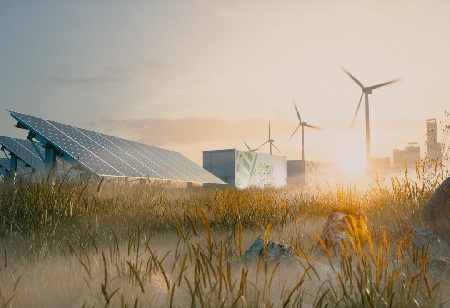The power sector is going global as part of Vision 2047, the government’s plan to make India one of the world’s top three economies by the 100th year of Independence. Strategies being explored by the power ministry include initial public offerings (IPOs) in global markets, mergers and acquisitions (M&As) in more overseas strategic resources and expanding the global footprint of Indian firms, said two government officials aware of the plans.
The playbook includes peer-to-peer (P2P) energy trading to meet enhanced energy demand and drive economic growth while ensuring access to cheap, reliable and clean electricity. The proposed plan also involves improving corporate governance practices at state-owned electricity distribution companies, cutting tariffs, reducing cross-subsidies and shortening the power purchase agreement duration from 25 years.
Electricity costs are a substantial component of manufacturing expenses, and any reduction will help the government’s Make in India push, being rolled out through the production-linked incentive scheme. The focus is also on building self-reliance in emerging technologies and promoting domestic production of critical equipment such as supervisory control and data acquisition (Scada), transformer and batteries amid mounting Chinese hacking attacks on Indian critical infrastructure such as power grids.
Some of the other initiatives being explored are promoting competition by delicensing distribution, and increasing private participation through privatization and franchises.
“It is still at the discussion stage, we have to get the states on board," said one of the officials cited above requesting anonymity. Queries mailed to a union power ministry spokesperson on Friday afternoon remained unanswered at press time.In an attempt to help improve cross-sector energy efficiency, the plan foresees developing market instruments such as carbon credits, energy certificates and fiscal incentives.
It also involves promoting ease of living by enabling consumer choice and innovation at the grassroots with minimal institutional intervention. There are also proposals to facilitate consumer-centric business models and regulatory structure to ensure technical integration of decentralized grids.
To accelerate India’s transition to green energy and zero carbon emission, the focus may be on retiring power plants working below the operating threshold and scaling up hydropower, and promoting small-scale technologies such as gravity hydraulic machines and hydro kinetic turbines. The plan is to increase the operational flexibility of coal-fuelled plants and improve the utilization of gas fuelled plants.
One of the proposed goals is to develop regional electricity markets backed by regional grids that will involve building new interconnections, institutional arrangements and regulatory framework for cross-border coordination and promoting the ambitious One Sun One World One Grid (OSOWOG) scheme.
Mint had earlier reported about three pilot interconnection corridors having been shortlisted for detailed technical and financial viability under OSOWOG. They are: South Asia (India)-Southeast Asia (Myanmar to Thailand), South Asia (India)-West Asia and West Asia-Africa.
There are also two options being explored to connect with the Gulf Cooperation Council (GCC) countries. One is an under-sea link to connect Gujarat with Oman, and the other a land route via Pakistan and Afghanistan to West Asia.
